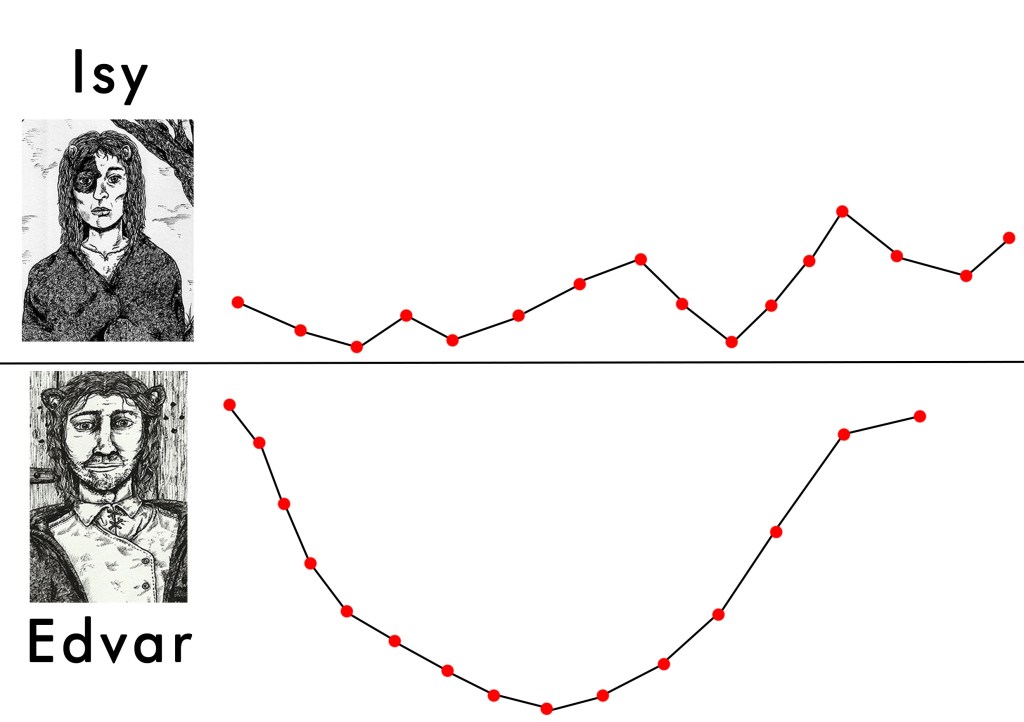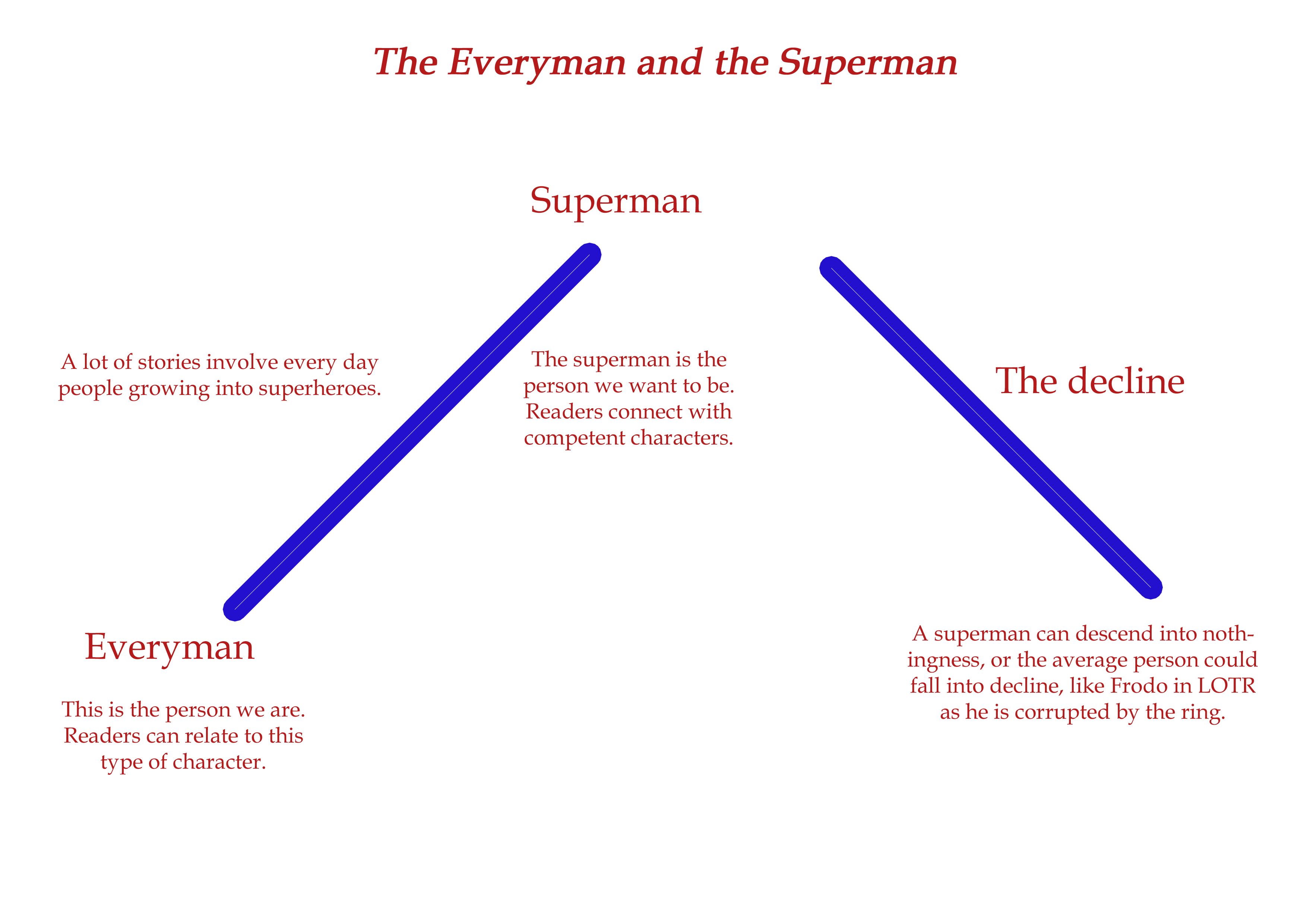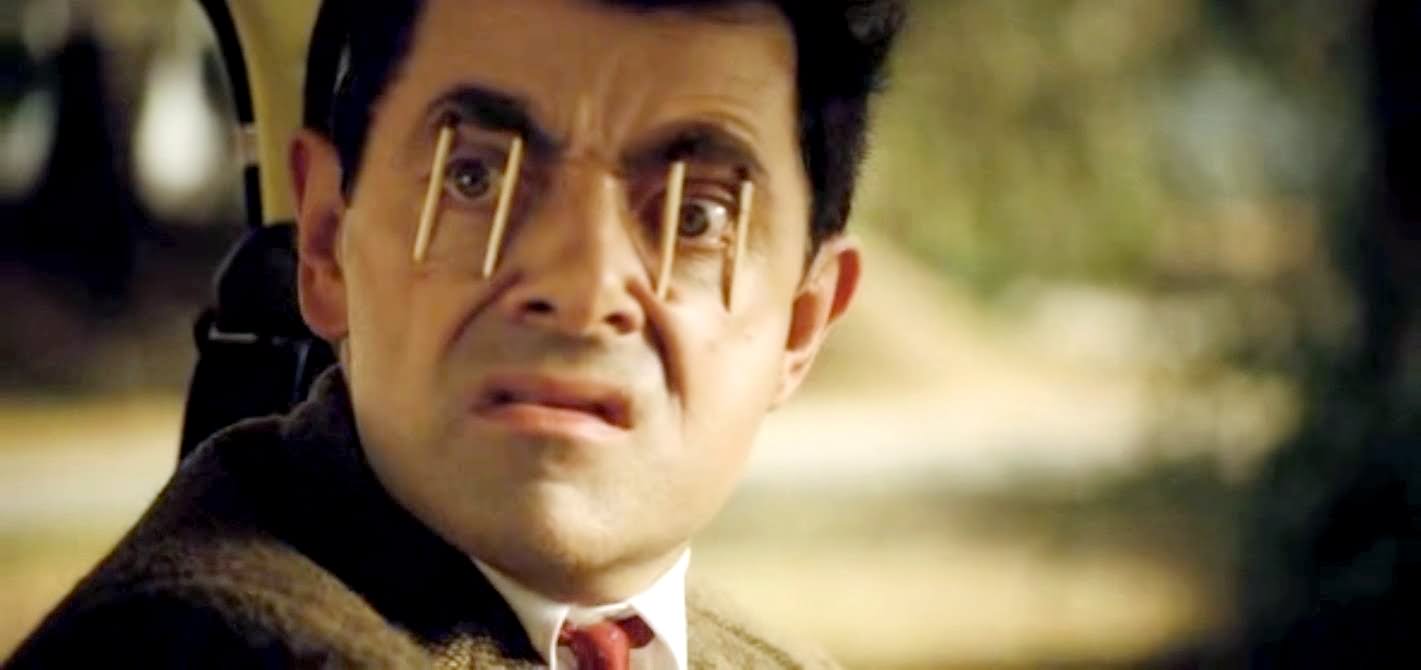Character development in writing plays a massive role in creating compelling stories. Regardless of genre, we love characters that grow and change as the story unfolds. These changes often arise because of conflict, with characters developing either in a positive or negative way as a result. In this guide, we’ll take a look at some awesome character development examples.
But to do this badly could spell disaster. It was arguably the main flaw behind the final season of HBO’s Game of Throne—a complete lack of character development. In the end, viewers grew annoyed because characters lacked compelling justifications for their actions—they weren’t developed.
In this guide, we’ll answer questions like “what does character development mean?”. We’ll assess what’s needed for the growth of a character, examine character development examples, and take a look at some exercises you may find useful.
I’ve also added links to some related writing tips and guides you may find useful, as well as a free workshop and podcast.
Choose A Chapter
To skip to the section you’re most interested in, just click below.
- What Does Character Development Mean?
- Character Development Examples
- How Does Character Development Affect A Story?
- How To Achieve Growth In Character
- How Can You Measure Growth In Character?
- Exercises On Character Growth
- How Do Non-Planners Create And Develop Characters?
- Discuss Character Development Examples In An Online Writing Group
- Discover More Character Development Examples
What Does Character Development Mean?
Let’s start with the basics – what does character development mean?
Everything in this world of ours changes. Mountains crumble into the sea. Islands disappear. Forests become icecaps. Change is eternal. It is one of life’s only constants. Some of us welcome it, embrace it. Others resist.
When it comes to our fictional characters, the very same rules apply to them, and when they do, it helps make our stories and our character’s journies more compelling.
Think of ourselves. Most of us want some kind of change in our lives. We want to better our standing, get a job we enjoy more, earn more money, buy more stuff.
Think back to the past, to your school years. How many of those best friends are you still in contact with now, and I bet you were inseparable with a few? What would be a thought that would enter your mind when debating whether or not to reach out to them now? Things aren’t the same as they used to be.
We do not live static existences. Sometimes we change through choice, and other times change is thrust upon us. Even the most ritualistic individuals experience some kind of change that alters their lives in stressful and conflicting ways.
For example, the closure of a local pub can cause great distress for the old patrons. What else have they to do with the long and lonely hours of the day? Where else have they to go? It seems mighty trivial, but trust me, I’ve run a pub.
Some people shape their lives around routine, and when what may seem a trivial change occurs, the ripples knock off course everything else in their life.
Character Development Examples
Character development in writing is a simple but important concept. It relates to the growth in character that takes place in a story as they interact with points of conflict. Sometimes characters change in positive ways, and sometimes they decline and deteriorate.
Change can be good or it can be bad. Often in fiction, we’re faced with negative changes, changes that create conflict in the lives of our characters. It’s through reacting to these conflicts our characters grow, at times by making the right move and resolving the conflict, or the wrong move and making things worse.
Let’s take a look at some character development examples. Many fantasy stories involve characters from humble beginnings that, as a result of decisions both voluntarily and involuntarily, go on to achieve greatness. Pug in Raymond Feist’s Riftwar Cycle, Kvothe in Patrick Rothfuss’s The Name of the Wind, Frodo and Sam in The Lord of the Rings, to name but a few.
All of these characters begin the story as one person, perhaps timid or fearful, and as the story grows, they grow too. By the end, they may be fearless or imbued with worldly wisdom. They may have great power or simply may now be at peace with themselves. All of these stories see our characters change, and that’s the key concept to bear in mind with character development—that change is a constant force in our lives and your stories too.
More Character Development Examples
Here are some more character development examples from fiction that may help illustrate the journey these fictional people go on:
- “The Great Gatsby” by F. Scott Fitzgerald – The character of Jay Gatsby undergoes significant development throughout the novel, as the reader learns about his past and his motivations for his actions. He’s very much a different person at the end of the tale.
- “To Kill a Mockingbird” by Harper Lee – In this brilliant novel, Scout Finch, the narrator, matures and gains a greater understanding of the world around her as the novel progresses.
- “The Catcher in the Rye” by J.D. Salinger – The protagonist Holden Caulfield’s emotional journey and his struggles with growing up play a huge part in this book.
- “The Lord of the Rings” by J.R.R. Tolkien – Frodo Baggins is transformed by the weight of the responsibility placed on him in carrying the One Ring to Mordor, and the physical and emotional trials he endures as a result. In the end, his character changes so much that he becomes broken.
- “The Diary of Anne Frank” by Anne Frank – Anne Frank’s diary, although non-fiction, provides a masterful chronicle of young Anne’s life in hiding during the Holocaust, and shows how she matures and changes over the course of two years.
- “Harry Potter” series by J.K. Rowling – Harry Potter’s growth from a neglected child to a powerful and responsible young man is arguably one of the most popular examples of character development in fiction.
How Does Character Development Affect A Story?
By this point, I may hopefully have convinced you of the constant and capricious nature of change. As a result, it’s important we reflect this in the development of our characters.
So where does character development relate to building a character?
“There is only one realm in which characters defy natural laws and remain the same—the realm of bad writing. And it is the fixed nature of the characters that make the writing bad.” Lajos Egri.
Characters may go on a physical journey, but often the greatest one of all is the one they go on within themselves, the change they go through as they overcome trials and tribulations, heartbreak and despair.
Let’s take a look at what we can do to get that wheel of change spinning.
How To Achieve Growth In Character
As we know, character development relates to the growth a character experiences in a story. This helps them almost feel alive and three-dimensional, complete with personality and motives. It can also relate to the changes a character experiences as they interact with points of conflict in the story.
As writers, there are numerous tools we can employ to ensure character development in our writing is compelling and interesting. In this section, I’ll take you through them, including my very own method of developing characters in fiction.
How Do You Create A Hero?
We all have a fantasy hero that we love—Aragorn, Princess Leia, Arya Stark, Luke Skywalker, Kvothe, Pug, Vin, Geralt. These characters capture our imaginations with their tremendous feats of glory. We forge bonds with them. We’d read thousands of pages just to see what happens in the end. As writers, that’s what we want.
It’s what I tried to do in Pariah’s Lament with Isy, and it seemed to work. The reason I mention it is that I wanted to share with you a few different ways of creating a hero. Because when we think of the word, our minds can jump to different things—what our interpretation is of a hero.
For some, it may be a cape-wearing lycra lover. For others, it could be the working man. Both are heroes in their own way.
- One way to create a hero is to follow a path of growth and development. From humble beginnings usually an orphan in fantasy, the protagonist realises their power and becomes the hero they were destined to be.
- Another approach, which is something I’ll cover further below, is to begin a story with a hero. One of the best character development examples in this regard is Geralt of Rivia in The Witcher series. Geralt is strong, competent and very much the hero of the story right from the off. His story, therefore, follows a developmental path of declines and gains, peaks and troughs. The highs and lows of life.
These are just a couple of examples. But the main point to take away is that when it comes to creating a hero, they need to have done something or possess a skill to warrant the title. And the build-up to that point has to be compelling. Readers are pretty sick and tired of the chosen one vibe, as my examination of fantasy tropes and cliches revealed. But that’s not to say you can’t do it in a less obvious way.
Character Plotting – A Way To Achieve Good Character Development
When it comes to building a character in fiction, we need to have an idea of who they are, what they’re capable of and what they want. This is all part of good character development.
Generally, all character-driven stories involve a character who wants something. The plot is simply them getting from point A to point B and dealing with the myriad points of conflict that arise along the way.
Now there’s a very handy method that I’ve developed over the years to chart a character’s emotional interaction with these various points of conflict. A way that ensures your character develops in a compelling and believable way—and trust me it’s important, otherwise, you may end up with something like the last season of Game of Thrones (which was devoid of character development).
Character plotting is simple. It involves charting the emotional journey and the growth and development of your characters as they interact with points of conflict (or plot points).
This emotional journey is so, so important when it comes to compelling character growth. As Moses Malevinsky said in The Science of Playwrighting, “Emotion is life. Life is emotion. Therefore emotion is drama. Drama is emotion.”
Let’s make things clearer. Here are two examples I’ve taken from my debut novel, Pariah’s Lament.

The two development paths you can see are quite different. Isy is a character that begins at the very bottom of the development chart. Her story is all about growth, with a few bumps in the road along the way (hence the jagged rises and falls).
Edvar’s development chart is a little different. He begins the story in a somewhat better position to Isy, but things go wrong and his fall is sharp and sudden. His story is one of redemption—falling to the bottom of the pack and rising up.
In my dedicated guide to character plotting, I go over this method in more detail, but as you can see, having this visual aid makes a huge difference. It’s definitely one of the best ways to achieve character development in writing.
A Character Forced To Make A Decision
Characters can be motivated to act by any number of influences and pressures. Let’s take a gambler who’s fallen into debt with an unsavoury chap. This moneylender has beaten him for the money, and now is threatening to hurt his family. He is afraid. He’s not much of a fighter, nor is he overly aggressive. But he cares deeply for his family. These conflicting pressures force him to make a decision: fight back or flee?
Innumerable factors can influence even the most trivial of decisions, yet so often they fall under the umbrellas of the physiological, the sociological and the psychological—indeed, the very make-up of our characters.
Who we are, what we believe, how we were raised and the like all influence what decisions we make and that, in turn, can lead us down paths of change. According to Egri, it’s knowing in detail these characteristics that help us determine whether a character has made the choice most consistent with who they are. Or as Egri put it: ‘Only in bad writing does a man change without regard to his characteristics.’
What Does A Character Want?
In addition to their characteristics, a character that wants something more than anything else can propel their development.
Now, this could be a positive thing or it could be a negative thing. For instance, a character with an addiction to crack cocaine may want nothing more than to secure their next fix. What steps will they take to achieve that? Will they steal, mug people or do something much worse?
This is an extreme example, but the principle can apply to other situations. A character who really wants something is going to be more motivated to achieve their goal, and in order to do so, they may have to grow and develop, sometimes in positive ways, sometimes in negative ones. If we look at the character development examples above, Frodo is one individual who’s super motivated to achieve his goal and is forced to grow as an individual to do so.
How To Write Compelling Characters – Charting Character Development
As well as my character plotting approach, there’s another nifty tool to help chart the development of characters, known as ‘the everyman and the superman.’
The ‘everyman’ is the average Joe. The person content with their lot, until life throws them a twist, perhaps forcing them on a path they never intended. That path, and the obstacles they must overcome along the way, lead them to change and develop as individuals, maybe learning things about themselves they never knew, realising their potential, or gaining new skills to help them become ‘supermen’ or ‘superwomen’.
Generally, a story involving a rounded ‘superman’ tends to involve a highly competent character saving the world. There isn’t much room for character development because they’re already the best at everything, ever. Take James Bond, for example. He’s forever foiling plots to destroy the world and nobody ever doubts that he’s going to fail.
Supermen, however, can fall like redwoods, and this is an interesting approach you can take to shake things up. How can that once great character regain greatness?

If you’ve watched some of the later James Bond films, you’ll notice that the writers have gone down this route, exploring the decline of the superman. It’s a great way to introduce some aspects of character development to those who are already fully formed in some aspects of their life.
How Can You Measure Growth In Character?
So we’ve looked at lots of different ways to help ensure our characters undergo some kind of change. But how do we make sure that we’ve achieved it?
Well, a lot of these checks will take place during the editing process. And when you’re going back through and assessing your characters’ journeys, here are a few things you can look out for to help measure growth in character:
- Changes in beliefs and values – One of the most common ways to measure growth in a character is to observe changes in their beliefs and values. A character who starts out with a narrow or rigid view of the world and evolves to become more open-minded and accepting can be seen as having grown.
- Development of new skills or abilities – Another way to measure growth in a character is to see them develop new skills or abilities. This could be physical, emotional, or intellectual growth, and it shows the character is capable of adapting and learning new things.
- Transformation of relationships – A change in the relationships a character has with others can also be an indicator of growth. This could be a shift from animosity to friendship, or from passive to assertive behavior.
- Overcoming personal challenges – Characters who face personal challenges and overcome them can also be seen as having grown. This could be anything from overcoming a fear to dealing with a traumatic event. In my novel Pariah’s Lament, the protagonist Isy was born with a birthmark covering half of her face. In the story, she has to overcome the impact of being scorned by everyone around her because of it.
- Increased self-awareness – When a character becomes more self-aware and introspective, it can also be a sign of growth. This could involve a greater understanding of their own motivations, emotions, and weaknesses.
These are just a few ways to measure growth in character in fiction writing, but they’re pretty effective guages. The important thing is to be consistent in your characterization and make sure the growth is organic and believable within the context of the story.
Exercises On Character Growth
To help reinforce what we’ve covered in this guide, I’ve included an exercise.
Linked to character plotting above, the exercise is all about charting your character’s emotional development as they move through the story, though it can just as easily be used to gauge their physical development too, as well as any other traits you may want to include. For instance, if you’re writing a fantasy novel, using this exercise to chart their adeptness in magic could also be useful.
- Now all you have to do is create your character and give them a goal. What do they want more than anything else? If working with a protagonist, this is usually the main plot of the story.
- Next, create a chart like the Edvar and Isy one above. On the left-hand side of that chart, add the starting point. This may be near the top or bottom of the Y axis on the chart (the vertical line). On the opposite end of the chart, add in another point. This is the conclusion of your story.
- Now move through the points of conflict in your plot and add them into the chart. If the outcome of dealing with the conflict is positive, the line moves up to the next point. If it’s a negative outcome, the line falls.
- You can add notes to each plot point to give yourself more information on what has developed.
By the end, you’ll have a visual overview of the growth of your character. And this can work for all types of characters, even secondary ones.
How Do Non-Planners Create And Develop Characters?
While this writing guide is one more tailored to the planners as opposed to the pantsers, it’s important to consider how non-planners approach writing a story, particularly from the perspective of character creation.
As someone who takes a hybrid approach to creating characters—planning out their core being as well as getting to know them along the way—I appreciate both sides of the argument.
First, as a non-planner, the ability to create a character as the story unfolds gives you maximum freedom and control. You don’t find yourself running into obstacles with the plot because it develops organically. From a reader’s perspective, this can make for a better tale.
Discuss Character Development Examples In An Online Writing Group
If you’d like more help, support and advice or would like to discuss character development examples, there’s somewhere you can get it. And that place is my online writing group.
It’s open to all writers and at the moment we have around 160 active members, all contributing to great discussions and helping each other out with the likes of beta reads.
To join, just click below.
I also have a list of other writing groups you can check out here.
Discover More Character Development Examples
Thanks for reading this guide on character development examples in writing. I hope you’ve found it useful. Below, I’ve included some links to extra resources you may find useful, as well as a link to watch my free workshop on how to write a fantasy novel in which I discuss characterisation at length.
- Great examples of the 5 senses in writing
- What is characterisation?
- How to write bad guys, villains and antagonists
- How to plan writing a story as a non-planner
- Head here to learn more about the best essays on creative writing
- Building and revealing characters in fiction
- Worldbuilding and religion
Free Writing Podcast On Conflict and Character Development
If you haven’t checked it out already, I host a regular fantasy writing podcast called The Fantasy Writers’ Toolshed. Not so long ago I did a special episode on how to create conflict, which ties in closely with character development, as we’ve seen.
If you need any more guidance on the character development examples covered here, then please get in touch.
- 5 Tips to Help Your Child Learn and Succeed at Primary School - February 26, 2024
- The Advantages Of Using An AI Essay Typer Alternative - February 14, 2024
- Advice On Getting Help With Your Homework - January 26, 2024





“and nobody ever doubts that he’s going to fail.” Succeed, Rich. No one doubts James Bond will succeed.
Doh! Thanks for spotting!
No prob! 😉
Pingback: A Fantasy Writers’ Handbook by Richie Billing @Magpie_Richie #Spotlight #BookPromo – Chat About Books
Pingback: What Is Characterization? – Richie Billing
Pingback: Cover Reveal: A Fantasy Writers' Handbook - Richie Billing
Pingback: The Bad Guys - Richie Billing
Pingback: How Do You Know When To Rewrite Your Story? | Richie Billing
Pingback: 7 Easy Ways To Improve Your Writing Skills - Richie Billing
Pingback: 8 Easy Ways To Improve Your Writing Skills - Richie Billing
Pingback: What Is Prose Writing? [With Examples] - Richie Billing